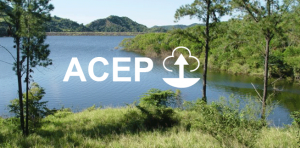USDA invests $350 million to protect farmlands, grasslands and wetlands
 America’s agricultural lands are getting another significant boost from the U.S. Department of Agriculture (USDA), as Secretary Tom Vilsack announced the availability of $350 million to help landowners protect and restore key farmlands, grasslands and wetlands across the nation.
America’s agricultural lands are getting another significant boost from the U.S. Department of Agriculture (USDA), as Secretary Tom Vilsack announced the availability of $350 million to help landowners protect and restore key farmlands, grasslands and wetlands across the nation.
The funding, provided through the 2014 Farm Bill’s Agricultural Conservation Easement Program (ACEP), rewards farmers and ranchers for voluntary efforts to protect critical water resources and wildlife habitat from future development.
ACEP is a program that consolidates three former programs – the Wetlands Reserve Program, Grassland Reserve Program and Farm and Ranch Lands Protection Program – into one voluntary program that provides technical and financial assistance to help landowners protect our nation’s vital farmlands, grasslands and wetlands.
The program is a shining example of USDA’s steadfast commitment to preserving the long-term viability and health of our agricultural landscapes.
How does it work?

ACEP’s agricultural land easements work in three key ways:
- First, the voluntary sale of easements works to prevent the conversion of productive farmland to non-agricultural uses, supporting our nation’s food supply.
- Second, the easements work to protect open spaces, or grasslands, that provide essential habitat for wildlife.
- Finally, the easements work to protect sensitive wetlands that support wildlife, improve water quality, reduce damage from flooding and recharge groundwater, among other benefits.
Of course, the protection and restoration of farmlands, grasslands and wetlands all provide recreational and educational opportunities, supporting local economies, histories and cultures.
Eligible landowners can choose to enroll in a permanent or 30-year easement. Tribal landowners also have the option of enrolling in 30-year contracts.
Examples of success
In the last two years, USDA’s Natural Resources Conservation Service (NRCS) has invested more than $600 million in ACEP funding to help landowners engage in voluntary conservation to provide long-term protection of an estimated 250,000 acres of farmland, grassland, and wetlands through more than 750 new easements.
In north central Iowa, ACEP funds have been used to add nearly 400 acres to a 600 acre wetland protecting the recently restored Big Wall Lake.
Two land trusts in Colorado plan to use ACEP funds to enroll 1,805 acres to protect critical sage-grouse habitat in Saguache County and in the Upper Colorado River Corridor Priority Landscape located in Grand County.
With these kinds of robust investments in our nation’s working lands, USDA is helping to ensure a more sustainable and prosperous future for people, wildlife and the economy.












